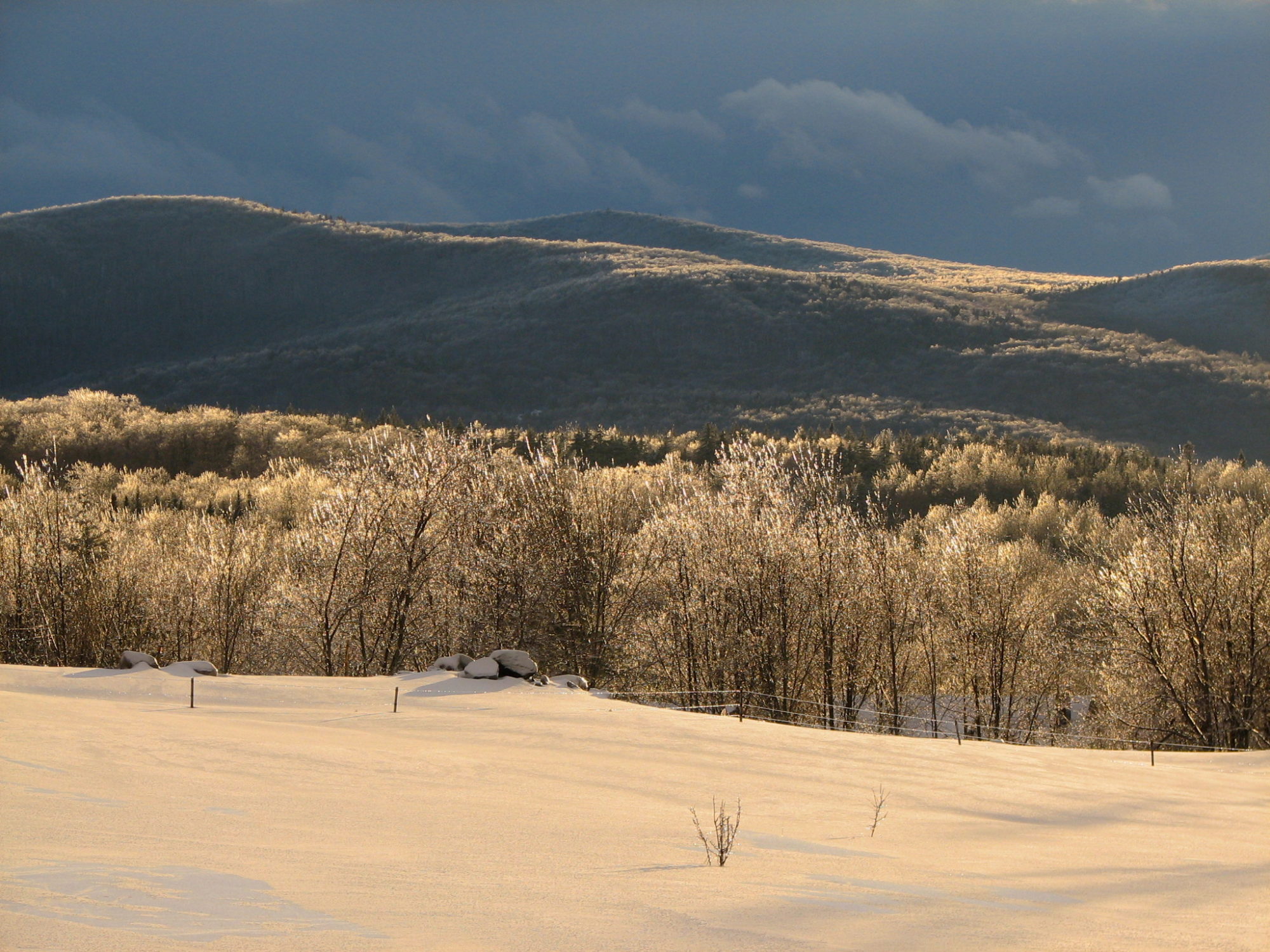A metallic-green invader from a far away land has arrived in our state. Don’t panic. This isn’t The War of the Worlds. The creature is an invasive forest pest known as the Emerald Ash Borer (EAB). To learn how this may impact our community, back in early 2018 I met with our county forester, and attended a public information session in Barre, on March 15, 2018.
Nathan Siegert from the USDA Forest Service said this ½” long, Asian-native beetle was first detected in North America in Detroit in 2002 and has since been found in 32 states, from Colorado to Louisiana, and parts of eastern Canada. Sadly, in February 2018, officials at the Vermont Department of Forests, Parks and Recreation announced the first confirmed detection in our state in northern Orange County.
As the name indicates, EAB is a destroyer of ash trees. It typically results in near 100% mortality. The three species at risk here in Vermont are black, green, and white ash. Despite being a meager 4-8% of our woodlands, ash are highly valued as sources of saw logs and firewood, street and landscape shade trees, and good animal habitat.
An infestation of the EAB often begins in late spring and early summer when the flying beetle lands in a new tree and begins to feed on leaves high in the canopy. In about three weeks, females will lay eggs in cracks and furrows in the bark, often near branch crotches. About two weeks later, the larvae emerge and begin to burrow into the tree just under the bark. They continue to feed throughout the summer and create serpentine galleries through the outer sapwood. Large numbers of these galleries will ultimately kill the tree by girdling it (preventing movement of nutrients), usually within 3-5 years. The larvae finish feeding around October and will over-winter in the wood. They will begin to emerge in May from characteristic D-shaped exit holes and the process will begin again.
Much of the damage from the EAB is done beneath the bark so it can be difficult to detect right away, especially since many of our ash trees are already in decline due to Ash Yellows or other stresses, such as drought. However, there are a few things we can keep a lookout for: canopy dieback, epicormic shoots or suckers growing from the main trunk, bark splits and exposed tunnel galleries, and the D-shaped holes the adults emerge from. Another telltale sign is a lot of activity by woodpeckers dining on the larval EAB in the fall. Look for shallow pecks just through the bark, unlike those deep cavities made by the Pileated Woodpecker. The Rutland office of the Vermont Agency of Natural Resources has a couple handy guides to help with identification. I’ve placed some of these in our town office for anyone to take.
Barbara Schultz, the State Forest Health Program Manager, said the State is cooperating with the US Department of Agriculture and others to survey and map the spread of the EAB in Vermont. [Update: there is now a statewide quarantine: https://fpr.vermont.gov/firewood-quarantine ]
We can help slow the spread of hitchhiking EAB by not trucking firewood and nursery stock long distances. Anyway, buying and harvesting locally helps our community!
Our Rutland County Forester cautioned us not to overreact but nonetheless to monitor the spread of EAB across the state and begin preparations for its inevitable arrival. He suggested that anyone in the Use Value Appraisal / ”Current Use” Program contact their professional consulting forester or him directly to review or update management objectives. He advised landowners with ash landscape trees to start setting aside funds for when the trees are infested and become hazards. Barbara Schultz added to this advice, saying “know where your ash is” and asked us to learn to identify ash trees and look for signs of EAB.
Learn more about the issue at Vermont Invasives and at the Vermont Department of Forests, Parks and Recreation.
If we detect or even suspect EAB, the State encourages us to report it at vtinvasives.org.
The Rutland County Forester, Kyle Mason, may be reached for more information at [email protected] .
~Jon McCann, Mount Holly Planning Commission
